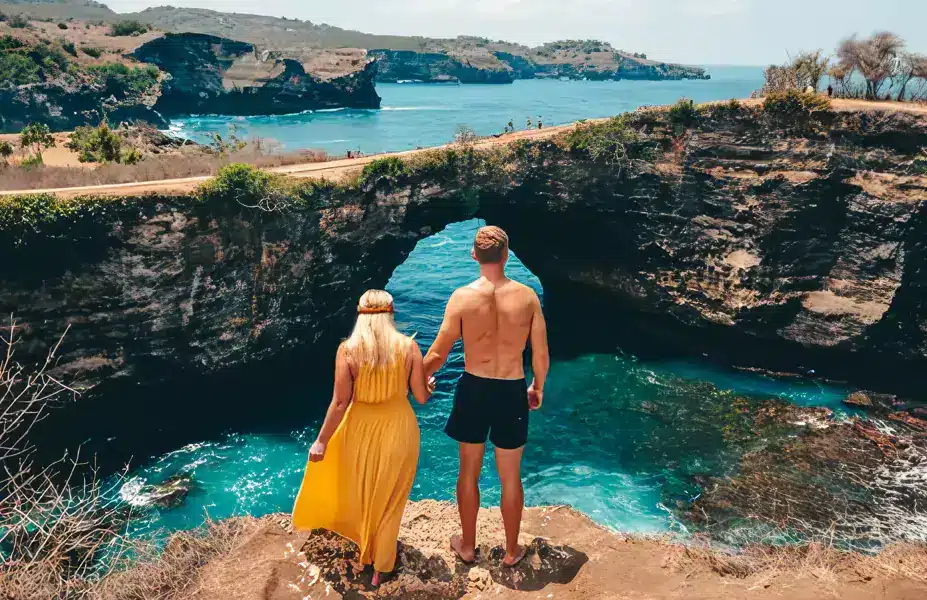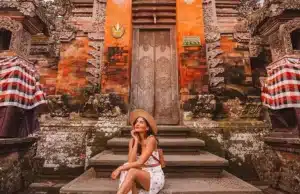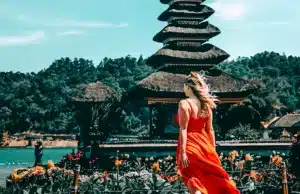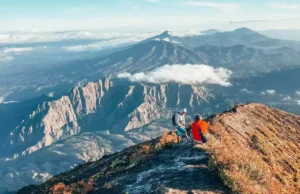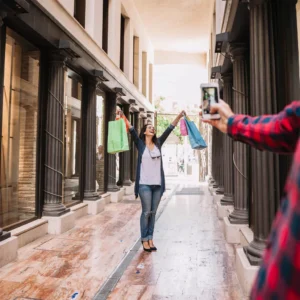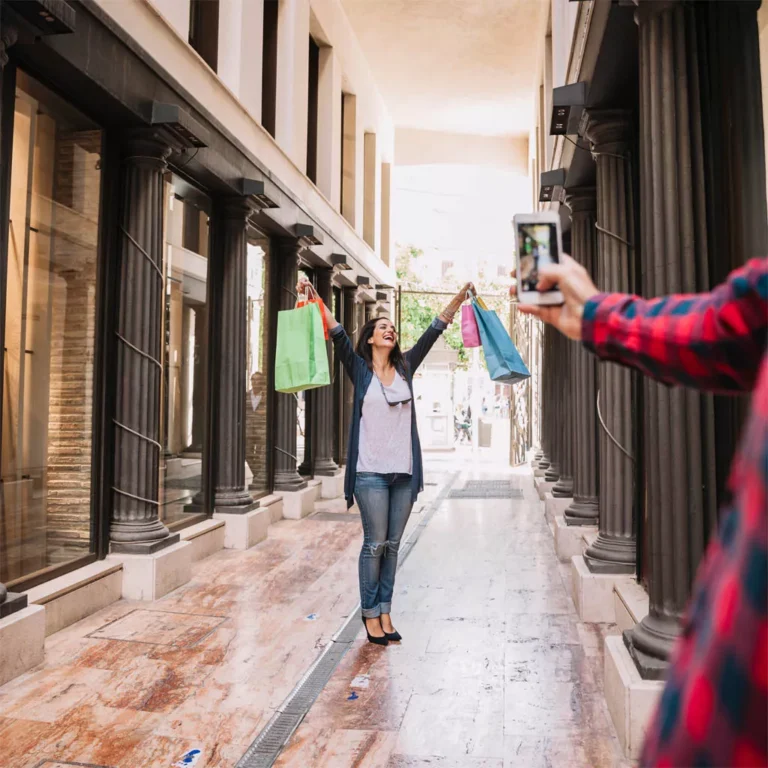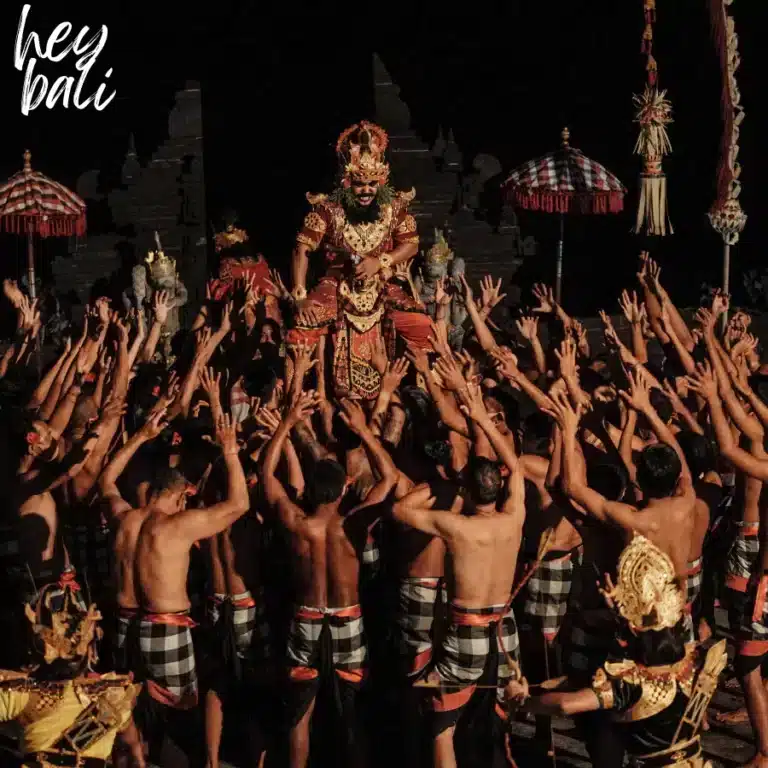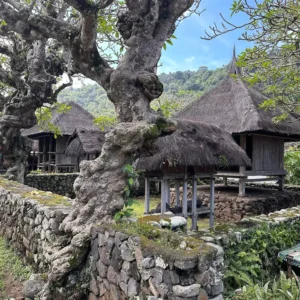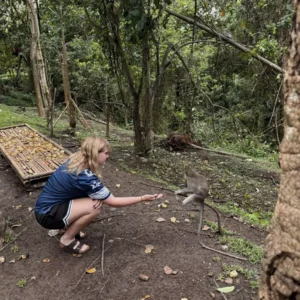Chapters
ToggleBest temples in Bali for tourists – When you think of the famous temples in Bali, you probably picture that one perfect Instagram shot: you, a flowing sarong, a towering gateway to the heavens, and a sky so blue it looks photoshopped. #Blessed.
But here’s the secret every Balinese local knows and every thoughtful traveler discovers: these temples aren’t just stone-cold sets for your vacation photos.
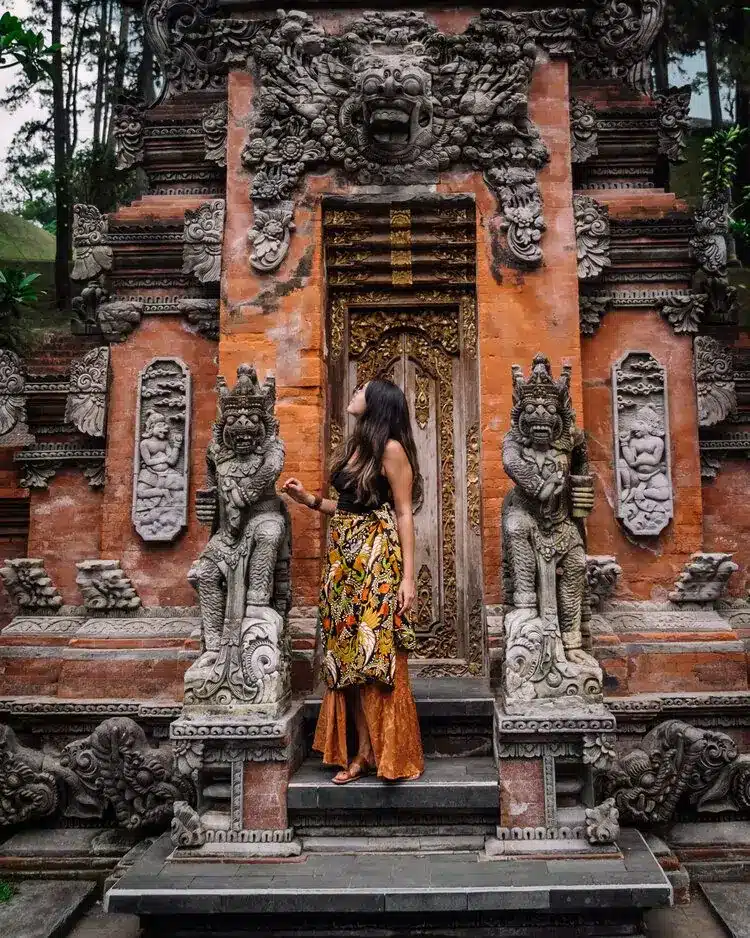
They’re the living, breathing heart of the island. They’re where daily offerings smoke and sizzle, where ancient legends are kept alive by whispered prayers, and where one wrong step in your flip-flops can lead to a serious need for that other famous Balinese word: Ampura.
Forget the brochure description. This isn’t a checklist; it’s a backstage pass. We’re going beyond the ‘gram to explore the real magic—the history, the hilarious myths, the sacred rules, and the sheer human drama that makes these famous temples in Bali so much more than just pretty stonework.
So, put down your selfie stick for a second. Let’s step through the gate and see what’s really going on.
🧳Read: Denpasar’s Hidden History: 6 Time-Travel Experiences
〰️🌀〰️🌀〰️🌀〰️
More Than Stone & Offerings: Why Temples Are Bali’s Beating Heart
Forget the postcard perfect photos for a second. The famous temples in Bali aren’t just pretty backdrops—they’re the island’s pulse. To see them as just architecture is like thinking of a heart as just a muscle; you’re missing the lifeblood pumping through it.
So what’s really happening?
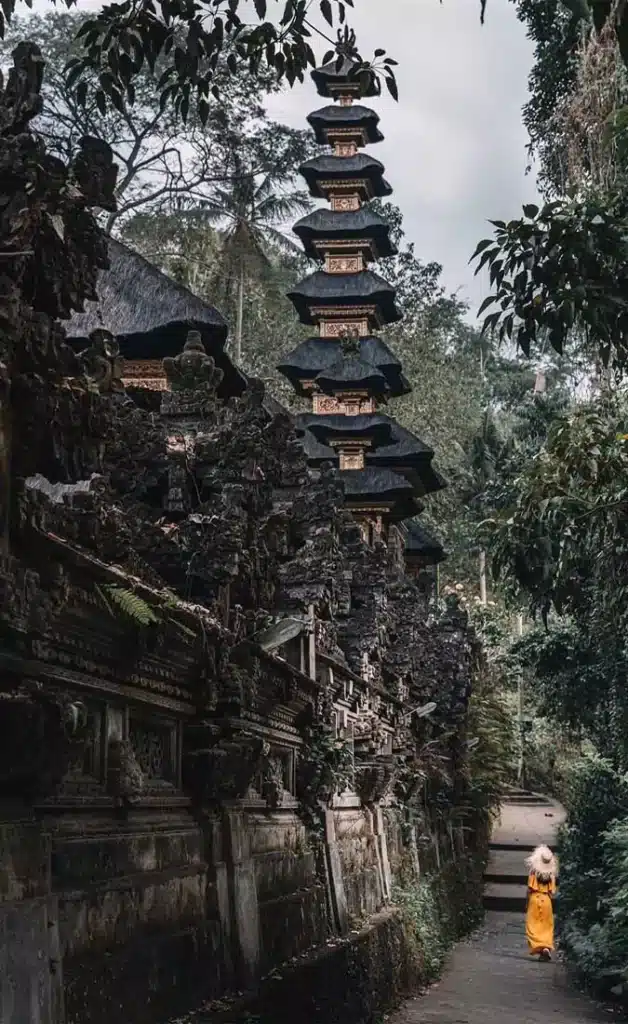
It’s dawn. Smoke from menyan incense hangs in the air. A local grandmother gently places a canang sari offering at the temple gate.
Nearby, a gamelan group practices clanging melodies under an ancient banyan tree. Kids dart across the courtyard. This isn’t ceremony day—this is Tuesday morning.
This daily rhythm is fueled by Tri Hita Karana— Bali’s ancient rulebook for harmony. Every temple is its living classroom:
- Harmony with the Divine (Parahyangan): The part tourists see. Offerings, prayers, ceremonies—it’s all a constant “thank you” to the gods.
- Harmony with People (Pawongan): The part tourists miss. Temples are community hubs. Think village WhatsApp group, but with stone carvings and holy water. Gossip is shared, deals are made, belonging is built.
- Harmony with Nature (Palemahan): Temples are strategically placed—on mountains, near rivers, by the sea—according to sacred maps. Every tree, rock, and spring within is considered alive with spirit. That’s why even new cars get blessed; it’s acknowledging the nature and effort that built them.
Walk into any famous temple in Bali and you’re not entering a museum. You’re stepping into a living organism where faith, community, and nature weave together. You don’t just see it—you feel it. And no filter can ever capture that.
🧳Read: Need help with left behind items in Bali? Free and Sincere Help from Hey Bali
〰️🌀〰️🌀〰️🌀〰️
The A-Listers: A Guide to Bali’s Most Famous Temples (Beyond the Photo Op)
Alright, let’s meet the celebrities. The famous temples in Bali that grace every postcard and travel guide. But we’re not just going to list them; we’re going to tell you what really makes them tick, why they’re special beyond the ‘gram, and how to not be that tourist when you visit.
Think of this as your backstage pass to the best temples in Bali for tourists who want to be more than just tourists.
1. Pura Besakih: The Mother of All Temples – Famous Temples in Bali

- The Vibe: The grand, sprawling, sometimes overwhelming matriarch. This isn’t a single temple but a massive complex of 23 temples clinging to the southwestern slopes of Mount Agung. It’s the most sacred of all Bali temples, the spiritual center of the entire island.
- Why It’s a Must: You feel the power here. The scale is immense, the history is palpable, and the views are epic (weather permitting). It’s less about a specific photo spot and more about absorbing the sheer magnitude of Balinese Hinduism.
- Pro Tip (Local Hack): Be prepared for persistent “guides.” A firm but polite “Suksma, tiang sudah ada guide” (“Thank you, I already have a guide”) and continuing to walk usually works. Dress extra respectfully here.
2. Tanah Lot: The Postcard King – Famous Temples in Bali
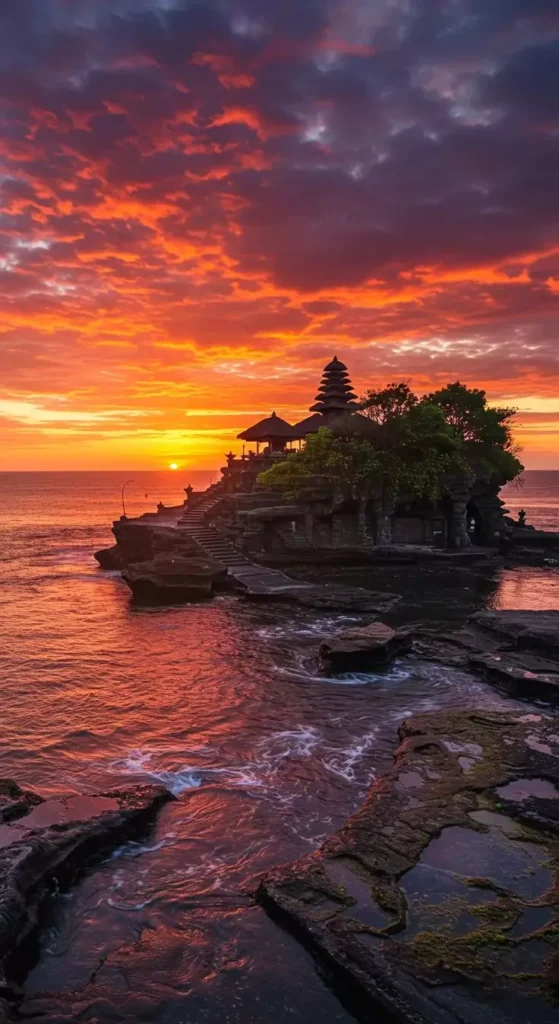
- The Vibe: Bali’s most iconic sunset selfie backdrop. This sea temple perched on a rocky outcrop is what dreams are made of—and Instagram feeds are filled with.
- Why It’s a Must: It’s stunning. Pure and simple. The visual of the temple against the crashing waves and a fiery sky is a quintessential Bali experience. It’s one of the most famous temples in Bali for a reason.
- Pro Tip (Local Hack): The temple itself is closed to foreigners during high tide, but the area is the main attraction. Go early to explore the caves and snake shrines (yes, real non-venomous snakes!) before the sunset crowds descend. The crowds are massive, so manage your expectations.
3. Pura Uluwatu: The Cliffside Drama Queen – Famous Temples in Bali

- The Vibe: Soaring 70 meters above the relentless Indian Ocean waves, Uluwatu is all about dramatic vistas, ancient lore, and mischievous monkeys.
- Why It’s a Must: The views are unbeatable. Stay for the sunset Kecak fire dance performance held in an amphitheater right on the cliff’s edge—it’s a mesmerizing cultural experience.
- Pro Tip (Local Hack): Secure your sunglasses, hats, and loose accessories. The monkeys are professional thieves and see your shiny things as offerings. Watch the show, but also wander the clifftop paths for quieter, equally stunning perspectives.
4. Tirta Empul: The Spiritual Car Wash – Famous Temples in Bali

- The Vibe: A holy spring water temple where locals and visitors come for melukat (a spiritual and physical purification ritual). It’s less about architecture and more about participation.
- Why It’s a Must: It’s one of the most authentic and immersive cultural experiences on the island. You can (respectfully) partake in the ritual, following the locals from spout to spout.
- Pro Tip (Local Hack): Rent a sarong and sash on site. It’s mandatory and shows respect. Know the ritual order: start from the left, use the first 11 spouts for cleansing, and the final two are only for funerary rites. Don’t skip the delicious lawar (traditional salad) at the warungs outside!
5. Pura Ulun Danu Beratan: The Floating Fantasy – Famous Temples in Bali

- The Vibe: Serene, cool, and almost surreal. The iconic pagodas of this temple appear to float on the mirror-like surface of Lake Beratan in the Bedugul highlands.
- Why It’s a Must: The photogenic beauty is otherworldly, especially when the mountain mists roll in. It’s dedicated to Dewi Danu, the goddess of water, lakes, and rivers, crucial for Bali’s rice cultivation.
- Pro Tip (Local Hack): Come early in the morning to beat the tour buses and capture the best photos without crowds. The weather here is significantly cooler, so bring a light jacket.
6. Goa Gajah: The Elephant Cave (& It’s Not What You Think)
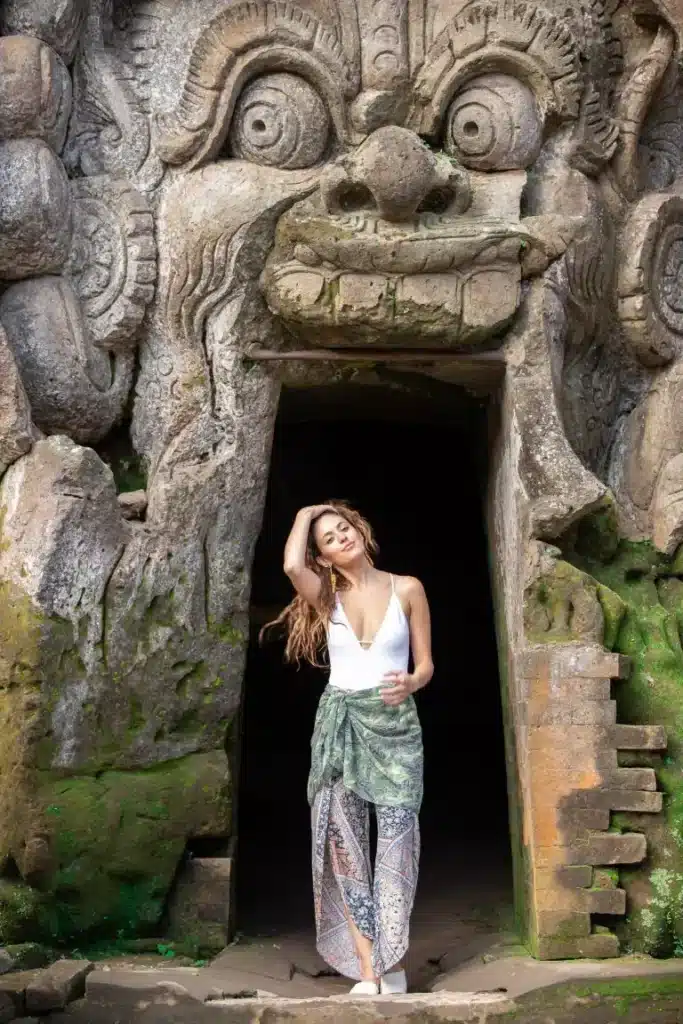
- The Vibe: A mysterious, ancient archaeological site. The name means “Elephant Cave,” though it’s likely named after the nearby Petanu River (Lawa Gajah).
- Why It’s a Must: The entrance is a masterpiece—a giant carved demon mouth you walk through into a meditative cave. Explore the surrounding bathing pools with ancient fertility statues. It feels like a historical treasure hunt.
- Pro Tip (Local Hack): Don’t just see the cave and leave. Take the staircase down the back to discover beautiful relic-filled gardens and a stream. It’s easy to miss and offers a peaceful escape.
7. Pura Taman Ayun: The Royal Garden Temple – Famous Temples in Bali
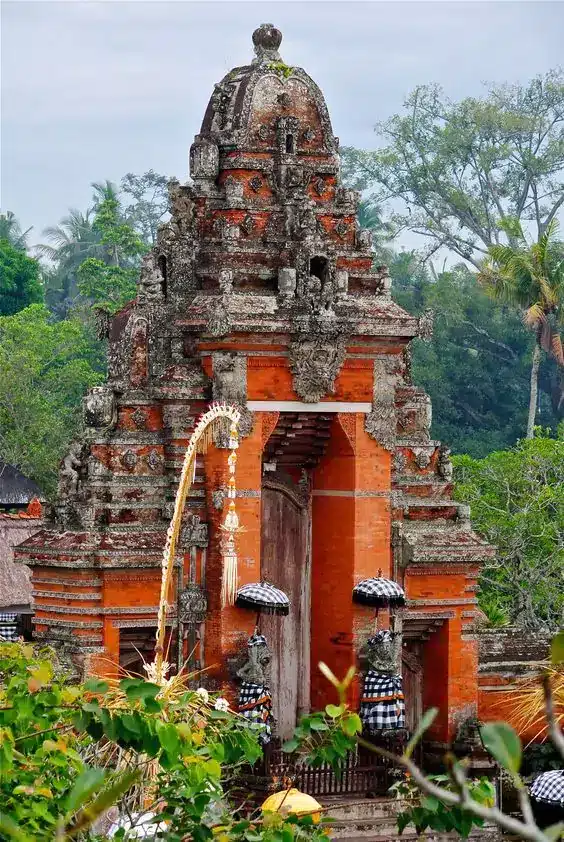
- The Vibe: The “Temple of the Beautiful Garden” was the royal family’s main temple for the Mengwi Kingdom. It’s surrounded by a wide, picturesque moat, making it look like a floating palace.
- Why It’s a Must: It’s a UNESCO World Heritage Site and a stunning example of Balinese temple architecture and landscape design. It feels expansive, regal, and less crowded than the coastal giants.
- Pro Tip (Local Hack): This is a place to appreciate architectural details. Walk the perfectly manicured grounds and notice the different tiers of the temple, representing the hierarchical structure of the universe. It’s a peaceful respite.
(Bonus!) Pura Lempuyang Luhur: The Gateway to… Patience

- The Vibe: The “Gates of Heaven” shot that has dominated Instagram. It offers a breathtaking view of Mount Agung through its split gate.
- The Real Deal: Know this: the famous reflection shot is created with a cleverly placed photographer’s mirror under the camera. The real queue for that photo can take hours. The temple complex itself is one of Bali’s oldest and most spiritually significant, but the journey involves climbing over 1,700 steps.
- Pro Tip (Local Hack): If you go, go for the spiritual climb and the challenge, not just the photo. The view is genuinely stunning even without the mirror trick. Respect the sacredness of the place beyond the queue.
👍Read: Transform Your Spirit: 3 Must-Visit Melukat Temples in Bali
〰️🌀〰️🌀〰️🌀〰️
Skip the Crowds: Bali’s Hidden Temples for the Culturally Curious
Okay, you’ve seen the A-listers. You’ve battled the sunset crowds at Tanah Lot and navigated the monkey mafia at Uluwatu. But what if you want to hear the actual wind rustle through the ancient banyan trees, or have a moment of actual peace without a dozen selfie sticks in your periphery?
The real magic often lies beyond the bus parking lots. For every one of the famous temples in Bali, there’s a quieter, equally mesmerizing sibling waiting to be discovered. These spots offer a raw, unfiltered look into Bali’s spiritual heart, minus the circus. Here are a few hidden gems for your inner explorer:
Pura Gunung Kawi: The Valley of the Kings
Forget building up—whoever built this place built down. Carved directly into the face of a sheer rock cliff in a lush river valley, these ten massive candi (shrines) are believed to be memorials for 11th-century royalty. The vibe is more ancient Indiana Jones than Instagram influencer. You’ll descend hundreds of steps through stunning rice terraces to reach this serene and powerful site. It’s one of Bali’s oldest and most unique sanctuaries, and the journey down (and back up!) is half the adventure.
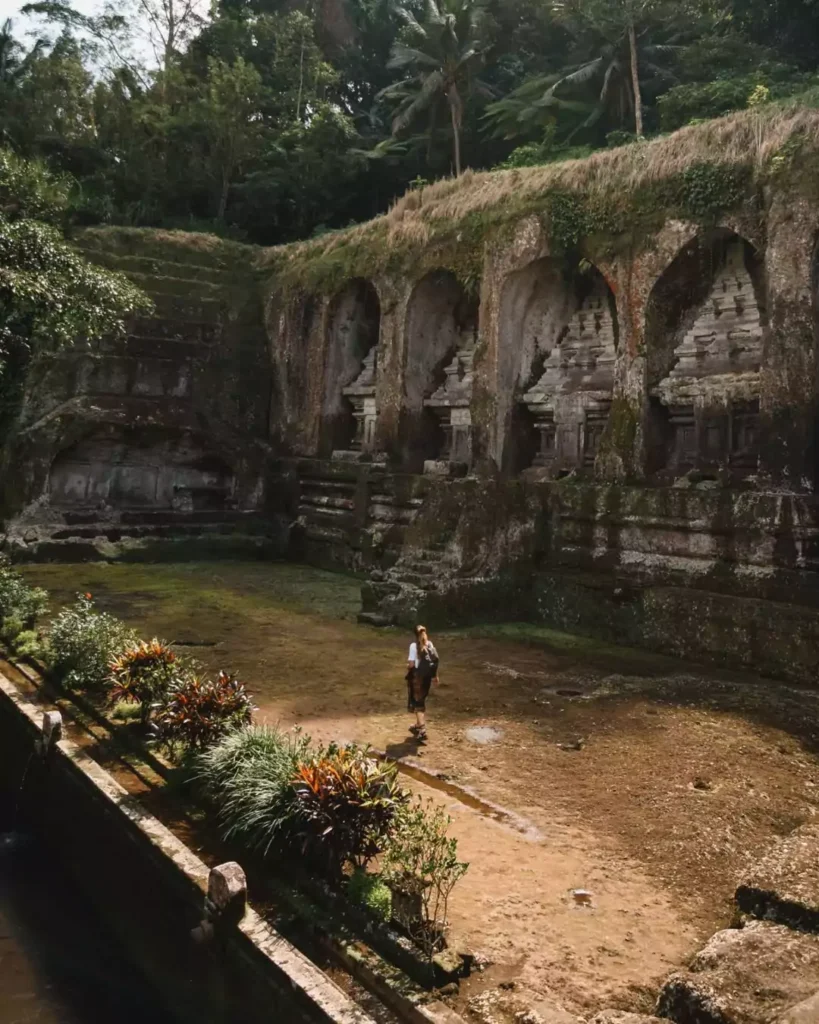
Pura Puseh Batuan: The Time Capsule
Located in the artistic heartland of Batuan village, this temple is a masterclass in classical Balinese art and architecture. While it’s not entirely unknown, it often gets overlooked for flashier neighbors. Big mistake. The stone carvings here are breathtakingly intricate, telling stories from ancient epics with a level of detail that will make your jaw drop. It’s a functioning temple, so you’ll likely see locals praying, making it a authentic and photogenic (yet respectful) glimpse into daily Balinese Hindu life.
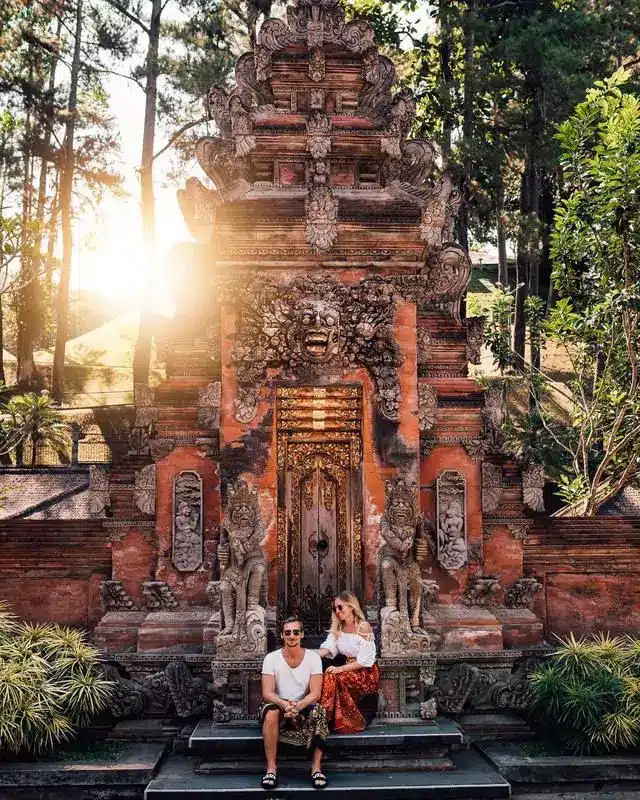
Why Bother with the Hidden Gems?
Visiting these less-trodden famous temples in Bali does more than just get you a better photo. It distributes tourism benefits beyond the usual spots, supports smaller local communities, and gives you a story that goes deeper than “I got the shot.” You get to experience the swadharma (true essence) of these places: peace, reflection, and a genuine connection to history.
So, rent that car, tell your driver “Saya ingin melihat yang lain” (“I want to see something different”), and go find your own favorite temple. The island’s best-kept secrets are waiting.
👍 Read : Best SIM Cards & eSIMs for Fast, Reliable Internet in Bali
〰️🌀〰️🌀〰️🌀〰️
Don’t Be a Temple Troll: How to Visit Bali’s Sacred Sites Without Causing a Side-Eye Storm
Let’s get one thing straight: entering a Balinese temple isn’t like walking into a museum. It’s like walking into someone’s most cherished living room while they’re in deep prayer. The right temple etiquette in Bali is the difference between being a respectful guest and becoming a story the locals tell about “that one clueless tourist.”
Here’s your no-nonsense guide on how to visit temples in Bali without accidentally offending everyone (and maybe the gods, too).
1. Dress to Impress (The Gods, Not Your Followers)
Forget your crop tops and booty shorts. The dress code is non-negotiable.
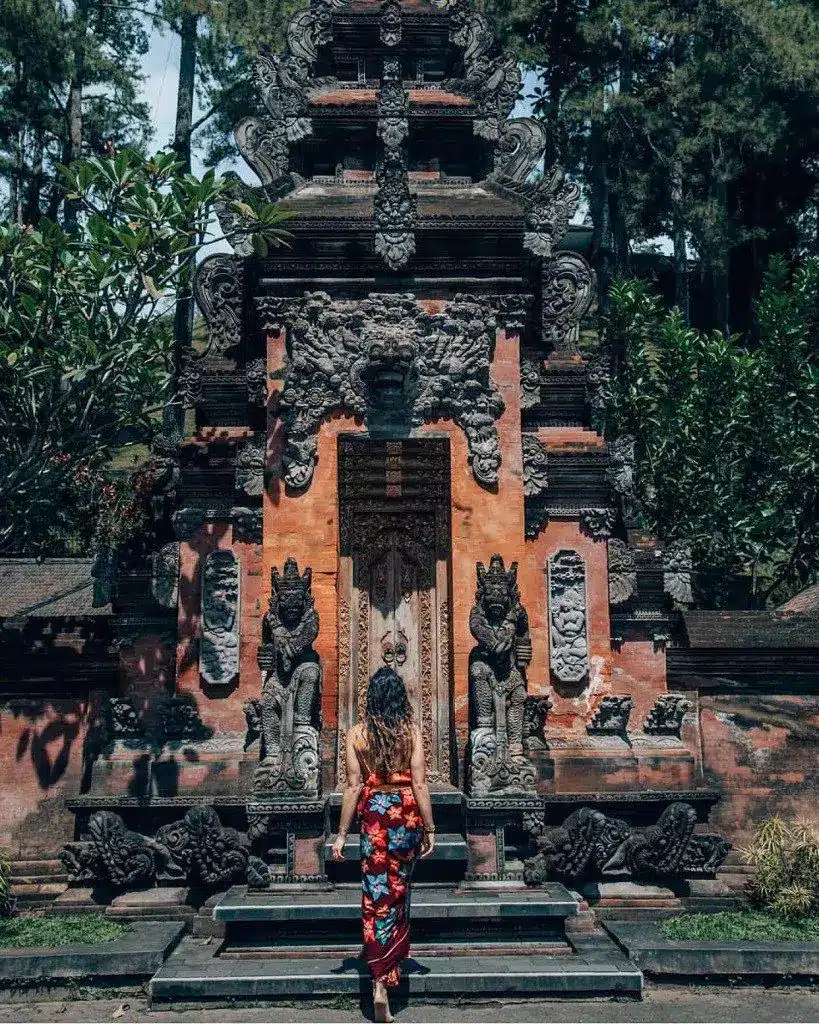
- The Uniform: Kain (sarong) and selendang (sash). This applies to everyone, regardless of gender. Yes, even if your thighs are famously insured.
- Pro Move: Most famous temples in Bali rent these at the entrance for a small donation. Better yet, buy your own from a local market—it’s a great souvenir and you’ll avoid the “rented sarong of a thousand tourists” vibe.
- Underneath: Wear a shirt that covers your shoulders and collarbone. Think “modest,” not “beach party.”
2. Timing is Everything (Avoid the Karma Rush Hour)

- Best Time: Early morning (around 8-9 AM) or late afternoon (around 3-4 PM). You’ll avoid the tour bus hordes, the brutal midday heat, and get the best light for photos.
- Worst Time: Major religious holidays (like Galungan or Kuningan). Unless you’re prepared to be immersed in massive, overwhelming (for outsiders) ceremonies, it’s best to steer clear unless invited by a local family.
3. Respect the Vibe (This Isn’t a Theme Park)
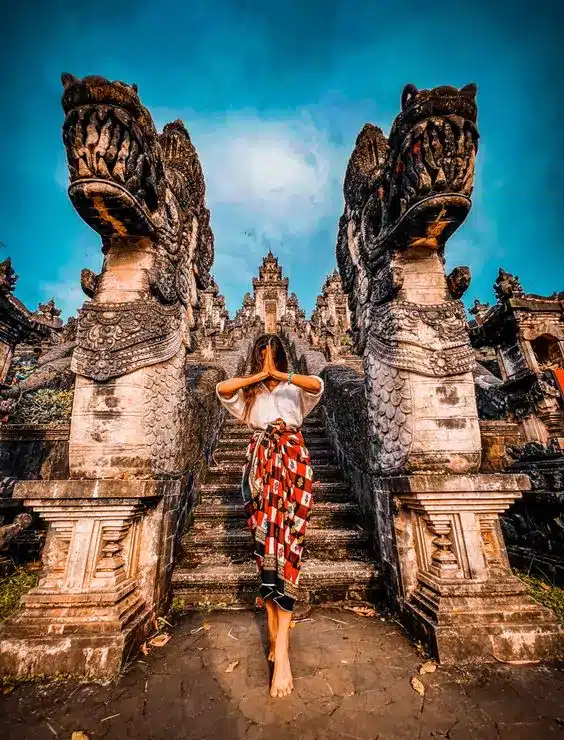
- The Golden Rule: If you see an offering on the ground, walk around it. Stepping on a canang sari is the spiritual equivalent of kicking over someone’s prayer.
- No Touchy: Don’t climb on structures, sit on altars, or point your feet at shrines (feet are considered impure).
- Ceremony Protocol: Stumble upon a ceremony? Consider yourself lucky! Observe quietly from a distance. Do not walk in front of praying people, use a flash, or talk loudly. This is their real life, not a performance for you.
4. The Period Rule
This is a big one and often left out of generic guides. Women are traditionally asked not to enter temples if they are menstruating. It’s considered a time of sebel (ritual impurity). While enforcement is rare, being aware of this custom shows deep respect for local beliefs.
Master these rules, and you won’t just be visiting the famous temples in Bali—you’ll be honoring them. And that’s the best way to ensure your travel karma stays firmly in the green.
👍Read: Guide to Sidemen Village: The Soul of East Bali
〰️🌀〰️🌀〰️🌀〰️
The Real Magic: What Bali’s Temples Are Actually Trying to Tell You
Here’s the deeper takeaway that no entrance ticket can buy: the famous temples in Bali aren’t just attractions.
They’re the island’s operating system. Every moss-covered stone, every waft of incense, every meticulously woven offering is a line of code in a program built on one ancient principle: balance.

To visit them is to get a masterclass in a different way of being. You start to see the world through the lens of Tri Hita Karana—that harmony with the divine, with community, and with nature isn’t just a nice idea; it’s the daily, non-negotiable work of life.
The Balinese don’t go to temple to escape life; they bring life into the temple. Business deals are discussed, kids are scolded, friendships are strengthened—all between prayers. It’s all connected.
So, when you tie that sarong and step through the split gate (candi bentar), you’re not just a spectator.
You’re a temporary participant in a centuries-old rhythm. You’re quietly acknowledging that some places are meant for more than a like—they’re meant for a pause.
The ultimate lesson these stone masters teach?
Bali doesn’t measure time in deadlines. It measures it in prayers, offerings, and the slow, steady growth of a banyan tree.
And that might be the most sacred souvenir you take home.
(P.S. Your Instagram feed will recover from having one less sunset leg pic. We promise.)
👍Read: Luggage Storage Bali Price: From Budget to Premium
〰️🌀〰️🌀〰️🌀〰️
FAQ: Your Bali Temple Questions, Answered (Without the Brochure Cliches)
You’ve got questions. We’ve got answers that don’t involve the phrase “must-visit spiritual journey.” Here’s the real deal on navigating the famous temples in Bali.
Yes, and so are the side-eyes you’ll get for calling them that. Every single one of the famous temples in Bali is a living, breathing place of worship. The difference? Tanah Lot has a gift shop. The key is to act like you’re in a sacred space (because you are), even if someone next to you is influencer-posing.
Only if you can follow directions. At spots like Tirta Empul, you’re welcome to join the purification ritual—it’s one of the most authentic experiences here. But it’s not a water park: watch locals, use the first 11 spouts (skip the last two—they’re for funeral rites), and don’t make TikToks mid-prayer. Sincerity > selfies.
Step on a canang sari offering. Those little leaf baskets on the ground? They’re prayers, not décor. Also, don’t treat shrines like gym equipment. Leaning on altars or climbing walls for photos is like using a church pew as a yoga mat—just don’t.
They’re washed, but if you’re germ-phobic, buy your own. It’s cheaper, supports locals, and you won’t look like every other tourist in a faded floral print. Pro tip: get one at a market—it’s your ticket to style and hygiene.
Read : Exploring Karangasem’s Rich Heritage 4 Must-Visit Historical Attractions in Bali
〰️🌀〰️🌀〰️🌀〰️
Your Temple Passport: Stamped with Stories, Not Just Selfies
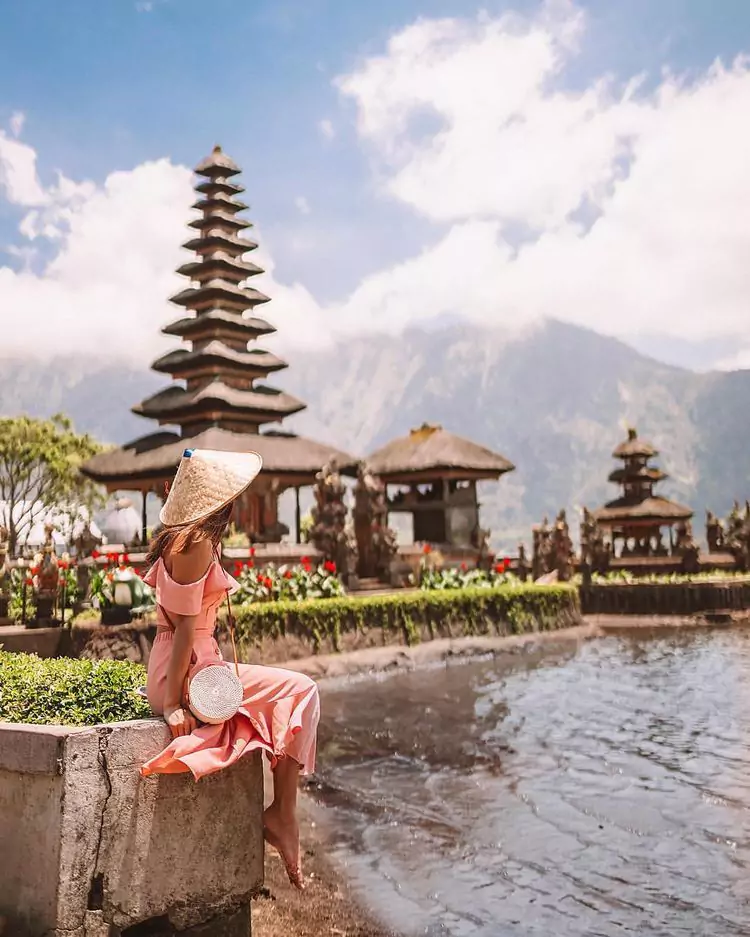
So, there you have it. Your journey through the famous temples in Bali is more than a checklist; it’s a crash course in Tri Hita Karana, a masterclass in not being a temple troll, and an open invitation to see the world through a lens of harmony and reverence.
From the cliffside drama of Uluwatu to the serene floating beauty of Ulun Danu Beratan, and even the hidden whispers of places like Gunung Kawi, each temple offers a unique chapter in Bali’s living story. They aren’t just landmarks—they are the keepers of rituals, the heart of communities, and the quiet, constant pulse of an island that measures time in prayers, not deadlines.
Ready to Explore Bali’s Soul with Respect and Ease?
Want to see these incredible sites with a guide who knows the stories behind the stones? Hey Bali offers personalized tours that take you beyond the crowds and into the real heart of the island’s culture.
Or, if you prefer the freedom of the open road, rent a car with us for just 500K/12 hours. Skip the inflated tourist taxi rates and explore the island’s spiritual landscape on your own terms—with our complimentary “Balinese Temple Etiquette Cheat Sheet” riding shotgun.
Your Bali adventure, infused with meaning and respect, starts with a text. 📱 Reach us at +62 811-281-407 and let’s make it happen.
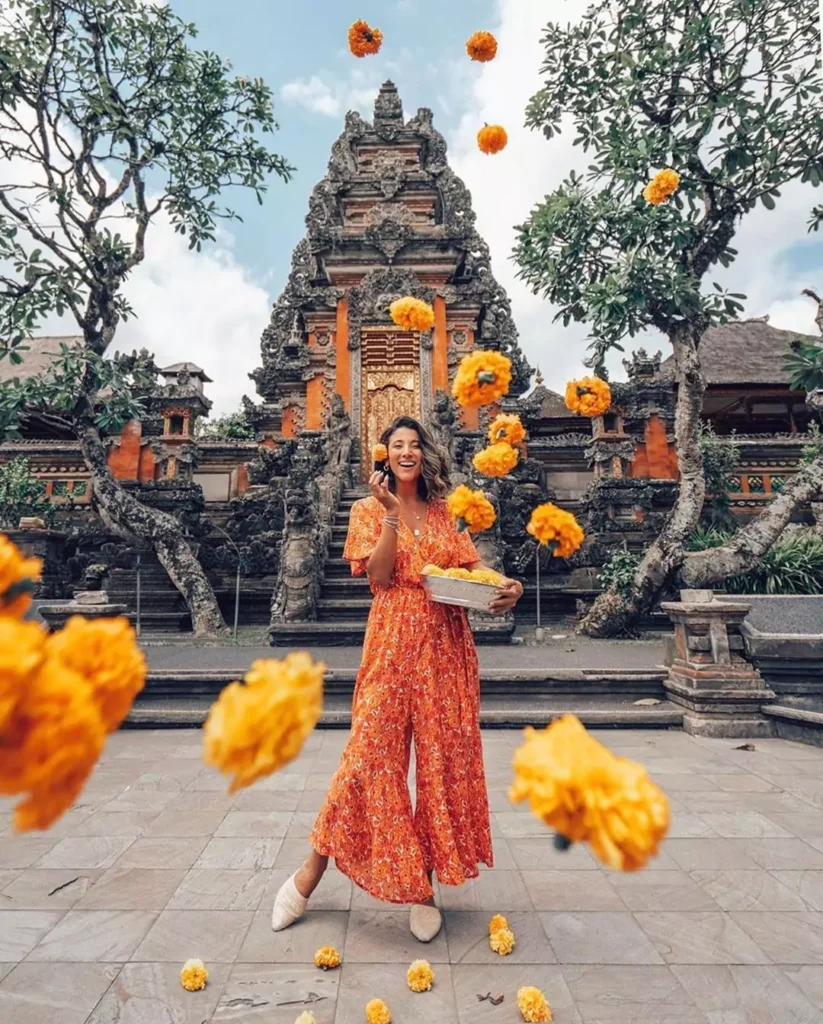
“Famous temples in Bali are more than stone and offerings—they are living stories. Make sure yours is one worth telling.” – Giostanovlatto, Founder Hey Bali
〰️🌀〰️🌀〰️🌀〰️

Meet the Author
Giostanovlatto is a self-proclaimed “professional wanderluster” who believes that life is too short to stay in one place. When he’s not busy chasing sunsets or hunting for the best local food, you can find him striking up conversations with strangers (who often become friends by the end of the trip).


